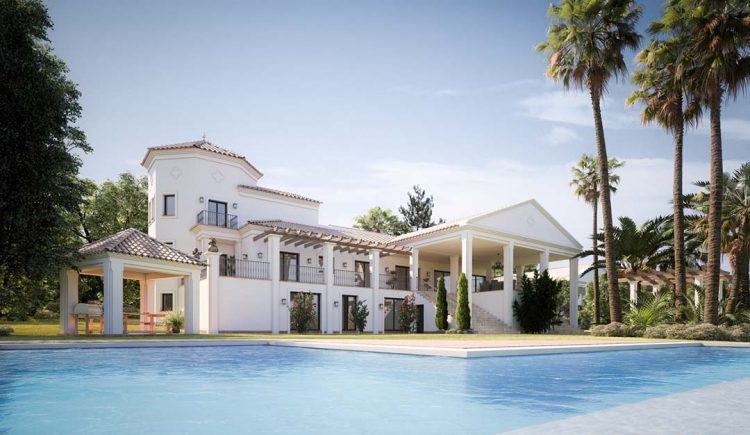A new report from Berkshire Hathaway HomeServices is shedding some light on what the post-pandemic luxury real estate market might look like as the travel restrictions and financial upheavals of the pandemic begin to settle and wealthy homebuyers begin assessing their preferences and needs in a changing world.
Of particular interest is a continued demand for vacation homes—where people are likely to spend significantly more time than they did previously—as well as a likely renewed interest in large metros like New York City and Dubai.
The report also examined geographic and demographic trends, honing in on what it referred to as the “millennial migration” of younger homebuyers flooding into non-traditional markets—places like Aspen, Colorado and Santa Barbara, California—driven by a desire for more space and flexible remote work schedules.
“What is interesting to me is that millennials are largely skipping the entry level home purchase and moving directly to a move-up home, or in many cases an aspirational home,” Christy Budnick, CEO of HSF Affiliates, LLC, tells RISMedia. “Since many millennials are purchasing their first home in their mid to late 30s, we are seeing an unusual percentage purchasing in the million dollars-plus range.”
Millennials also prefer less flashy, less opulent designs for their luxury homes, the report said, and value technology and smart-home amenities much more than previous generations.
Following the broader market, luxury buyers have also flocked to lesser-known cities in the Midwest especially, driving up prices and leaving scarce inventory.
Empty lots or tear-down homes in Coeur d’Alene are going for around $700,000, while prime locations along one of the area’s beautiful lakes are easily surpassing $2 million, according to the report. The median price for a luxury sector home in Austin blew past $2.75 million, the report said, and has seen a 66% increase in total sales in that sector.
Other hot cities in non-traditional luxury markets the report identified include Crested Butte, Colorado; Bozeman, Montana, and Jackson Hole, Wyoming.
“With the ability for many to work from home or a mix of in-office/at-home work, homebuyers will continue to prioritize lifestyle and the ability to spend more time enjoying life in their second or vacation homes,” Budnick says .
Florida is another destination for younger luxury buyers, according to the report, as people flee high taxes in Atlantic states. The overall median home price in Miami rose almost 30%, and the threshold to be considered a luxury property nearly doubled from around $1 million to more than $2 million.
Florida is also the epicenter of the “half-and-half” trend, where homeowners are looking for an equal amount of two good things as they split time between two places, according to the report. Sparked by a pandemic restlessness that saw frustrated, unfulfilled city-dwellers seeking gratification when their traditional at-home indulgences were restricted, these people are likely to continue slipping in and out of new homes—which are designed to comply with their every need—year-round.
“Because of the pandemic, buyers are no longer using their vacation homes just for vacation. Instead, they are spending much more time working remotely and splitting their time between primary and secondary homes,” Budnick says.
Privacy and flexibility characterize this new practice, which is also popular along the Jersey Shore and California coastline. Having two spaces where they will spend roughly equal amounts of time—with both used almost interchangeably for pleasure as well as work—is the definition of the “half-and-half.” Vaccinations and a loosening of previously tight restrictions have done nothing to quell people’s enjoyment, or desire to at least try out this new experience, according to the report.
International vacation homes are another trend on the uptick in a post-pandemic world, as luxury buyers cast their eyes overseas as they look to snatch up more space for leisure. Those buyers have piled into more rural areas, again with an emphasis on space and privacy, though also an eye on how governments handled the pandemic.
The report cited Dubai and Canada as two destinations that have seen an increased interest at least partially due to their success at staying open and safe during the pandemic, according to the report. Canada in particular was rated highly for its “risk readiness” and “health management,” and buyers were also drawn to country-cottage style properties that can provide flexibility with home offices or so-called “granny suites.”
“Many luxury buyers did seek to attain a new nationality during the early days of the pandemic, particularly those in hard hit areas as well as those looking for more space, but also excellent health care,” Budnick says. “This is one of the reasons that Canada has fared so well, offering homes with wide open space outside of the city but access to an outstanding health care system in the event it is needed.”
A handful of swanky Toronto suburbs saw median home prices soar more than 50% year-over-year, according to the report, and Dubai’s most expensive properties spiked 230% in the first quarter of 2021.
 Jesse Williams is RISMedia’s associate online editor. Email him your real estate news ideas to jwilliams@rismedia.com.
Jesse Williams is RISMedia’s associate online editor. Email him your real estate news ideas to jwilliams@rismedia.com.











